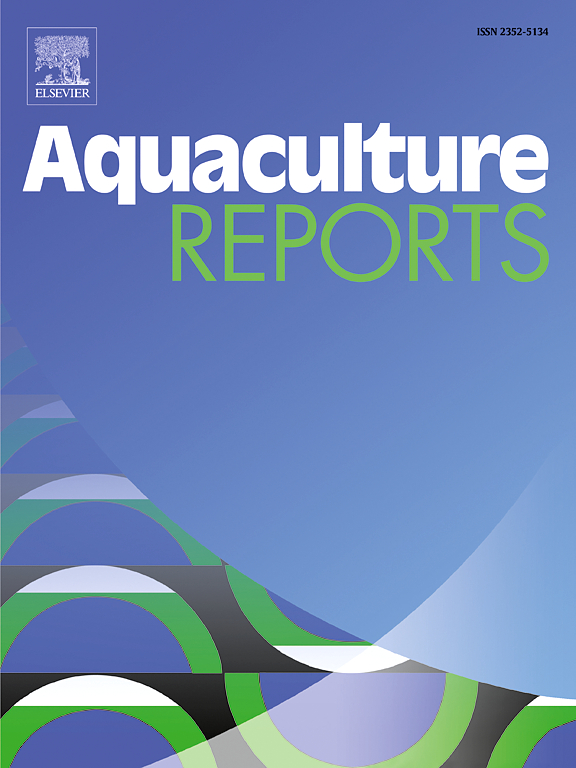Comparative in vitro effects of novel and conventional parasiticides on Thaparocleidus vistulensis (Siwak, 1932) (Monopisthocotyla) parasitizing European catfish (Silurus glanis)
IF 3.2
2区 农林科学
Q1 FISHERIES
引用次数: 0
Abstract
This in vitro study compares the effects of the novel biological parasiticide Biokos (BIO) to the conventional anthelmintics Praziquantel (PZQ) and Mebendazole (MBZ) on the gill parasitic monopisthocotylan Thaparocleidus vistulensis (Siwak, 1932), a species-specific parasite of European catfish (Silurus glanis). Parasites were exposed to long-term treatment and tested at concentrations of 0, 1, 5, 10, 20, 40, 60, 80, and 100 mg/L. The antiparasitic effects were observed at all life cycle stages, including eggs, oncomiracidia, developing juvenile, and adult monopisthocotylans. In vitro assays demonstrated MBZ to be the most effective in inhibiting the development of eggs with 100 % efficacy. Treatment of BIO was proven effective in targeting the oncomiracidia life stage compared to the others. Higher concentrations are required for all antiparasitic treatments to show their effectiveness against developing juvenile and adult T. vistulensis. This suggests that strategic combinations of the parasiticides may elevate efficacy.
新型和传统的杀虫剂对欧洲鲶鱼(Silurus glanis)寄生的vistulensis (Siwak, 1932) (Monopisthocotyla)体外效果的比较
本体外研究比较了新型生物杀虫剂Biokos (BIO)与传统驱虫药吡喹酮(PZQ)和甲苯咪唑(MBZ)对欧洲鲶鱼(Silurus glanis)特有的单子叶虫(Thaparocleidus vistulensis)鳃寄生的效果。寄生虫暴露于长期处理,并在0、1、5、10、20、40、60、80和100 mg/L浓度下进行检测。在卵、独子叶虫、发育中的幼虫和成虫的所有生命周期阶段均观察到抗寄生作用。体外实验表明,MBZ对抑制卵的发育最有效,其抑制率为100% %。与其他治疗方法相比,BIO治疗在靶向肿瘤细胞生命阶段被证明是有效的。所有的抗寄生处理都需要较高的浓度来显示其对发育中的紫斑夜蛾幼虫和成虫的有效性。这表明有策略地联合使用这些杀虫剂可能会提高药效。
本文章由计算机程序翻译,如有差异,请以英文原文为准。
求助全文
约1分钟内获得全文
求助全文
来源期刊

Aquaculture Reports
Agricultural and Biological Sciences-Animal Science and Zoology
CiteScore
5.90
自引率
8.10%
发文量
469
审稿时长
77 days
期刊介绍:
Aquaculture Reports will publish original research papers and reviews documenting outstanding science with a regional context and focus, answering the need for high quality information on novel species, systems and regions in emerging areas of aquaculture research and development, such as integrated multi-trophic aquaculture, urban aquaculture, ornamental, unfed aquaculture, offshore aquaculture and others. Papers having industry research as priority and encompassing product development research or current industry practice are encouraged.
 求助内容:
求助内容: 应助结果提醒方式:
应助结果提醒方式:


